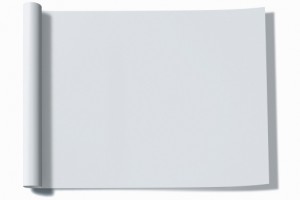More Simplicity
If two words can describe The New York Times's new design format for interactive viewing, they are beauty and simplicity. A piece called Why We Love Beautiful Things explores visual elements and how they connect with viewers on an innate level that can actual enhance physiological response.
The 2000-year-old proportions of the Golden Ratio of approximately 5 x 8 are common in everything from credit cards to the original iPod to the Stradivarius violin to the proportions of Mona Lisa’s face. Shapes having proportions approximating the golden ratio are believed to facilitate human image scanning.
It is only human to be drawn to good design. Color can enhance creativity and motivation. Jackson Pollack’s later paintings were found to replicate cerebral patterns that decrease stress levels by 60%. Beauty, color, form and design are fundamental to optimal web development.
In 2011 Andy Rutledge analyzed selected news websites, including the NYT's, and created a redesign. The result was widely criticized because it eliminated useful features such as summaries. But it also eliminated much that was detrimental.
Lead by Ian Adelman, Director of NYT Digital Design, the in-house design team began a focused effort at decluttering presentation and ensuring a clean and continuous flow of information. Those interested in seeing the results of the redesign process can view the prototype.
In a very modern move, navigation by pagination is being replaced by continuous scroll. The next most important change is shifting to responsive design. Content will adapt to screen conditions on the new site. A version especially for mobile devices is anticipated to launch in 2014. The content will be simplified for maximum speed on smart phones and tablets.
Ian Adelman notes that this is the first major redesign since 2006. At the time he started in 2011 there were only about 5 templates. Now the number of templates is in the hundreds. They support different article types, advertising types, screen sizes and custom layouts. The paper will support any size display, cross platform customization and frequent design updates.
In the new layout everything from news to magazine stories is on a single page. In the header area a horizontally scrolling navigation menu called The Ribbon displays stories related to the current context.
The new design supports both active and passive personalization. A navigation menu at the upper left corner of each page distinguished by a “hamburger icon” provides the reader with access to any section or subsection in the newspaper.
The New York Times redesign features an elegant and highly useable structure customizable by users and able to function in diverse environments. Those who currently have websites should observe how The New York Times is moving from a PC-centered design to the post-PC world while enhancing usability.
Companies that would like to have a professional team in-house should consider creating a freelance web designer job opening. This can give your business the skills necessary for creating a website with a high degree of usability and elegant design. For ongoing website design support, a fulltime interactive designer can provide the expert services needed to create a world class website.
Linda K is a freelance writer available on WriterAccess, a marketplace where clients and expert writers connect for assignments.


